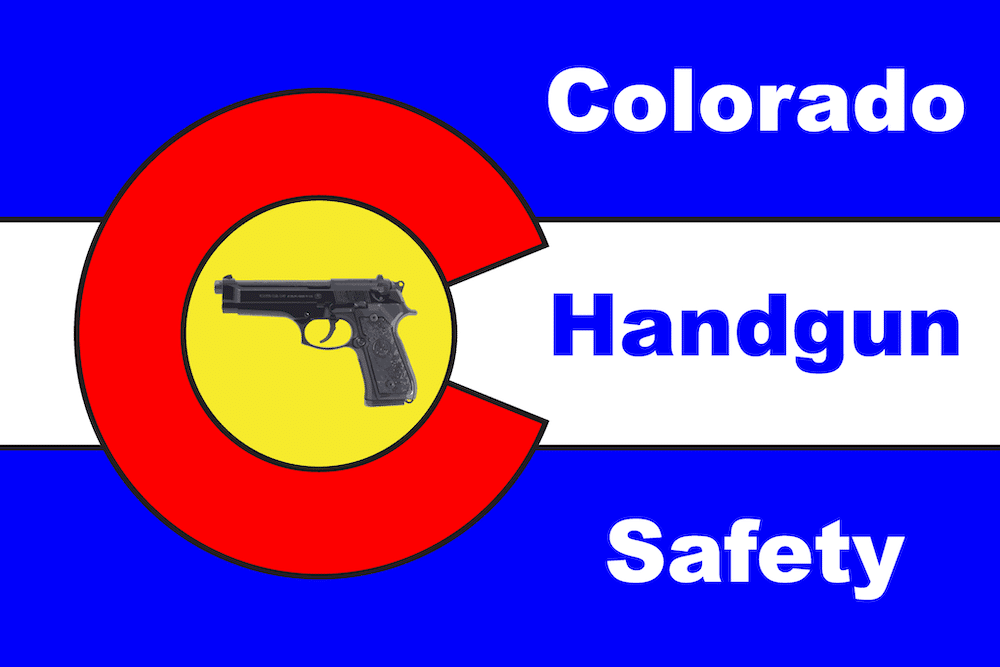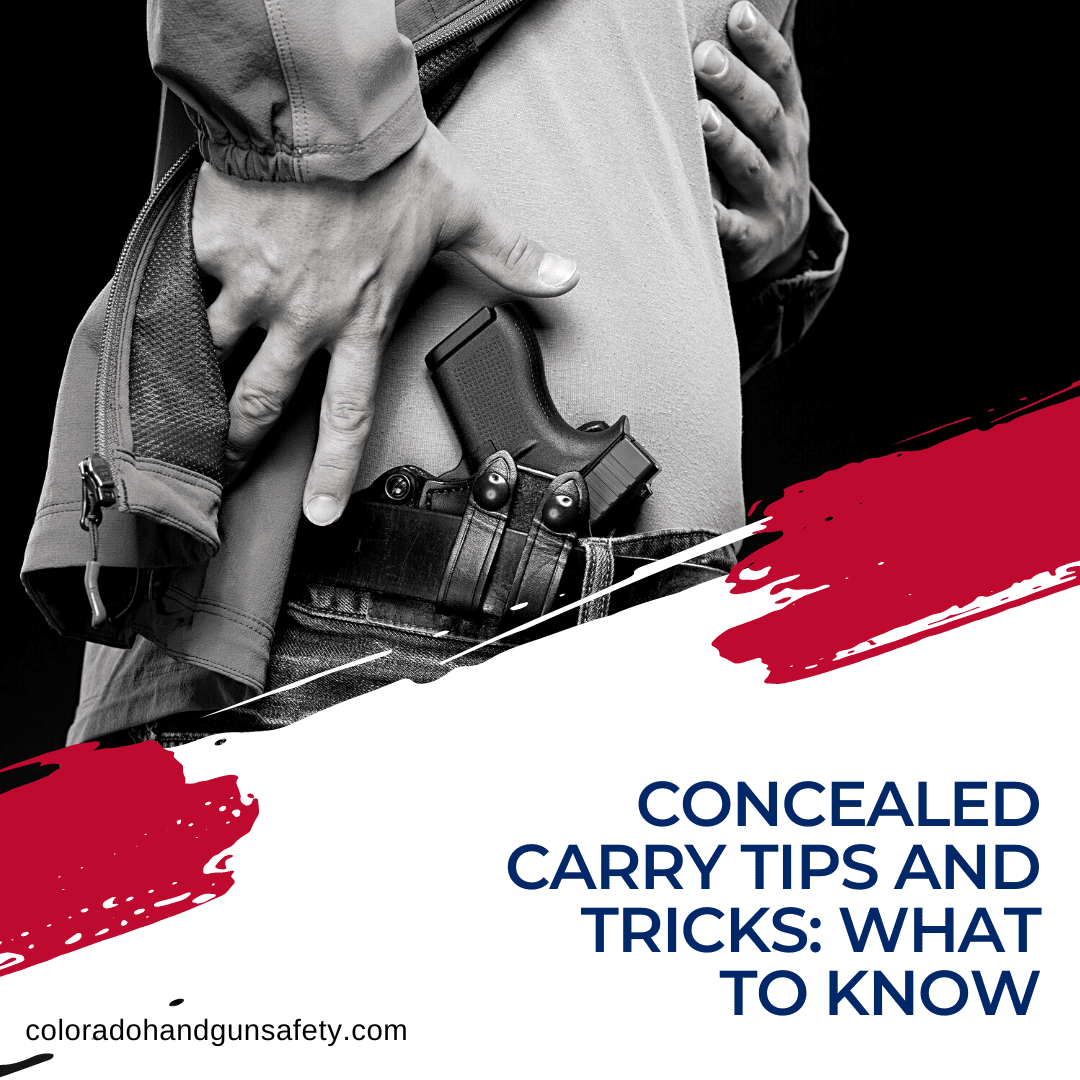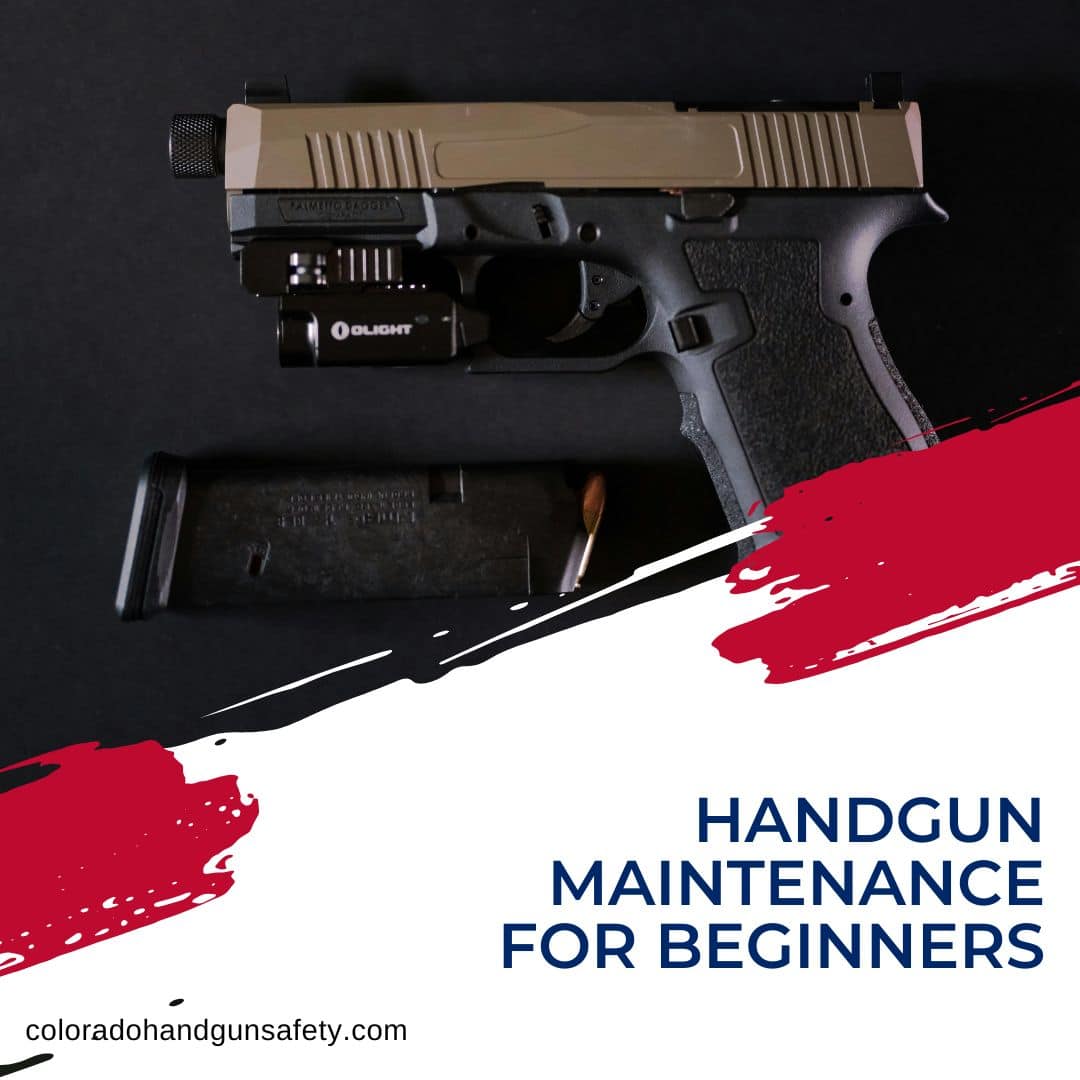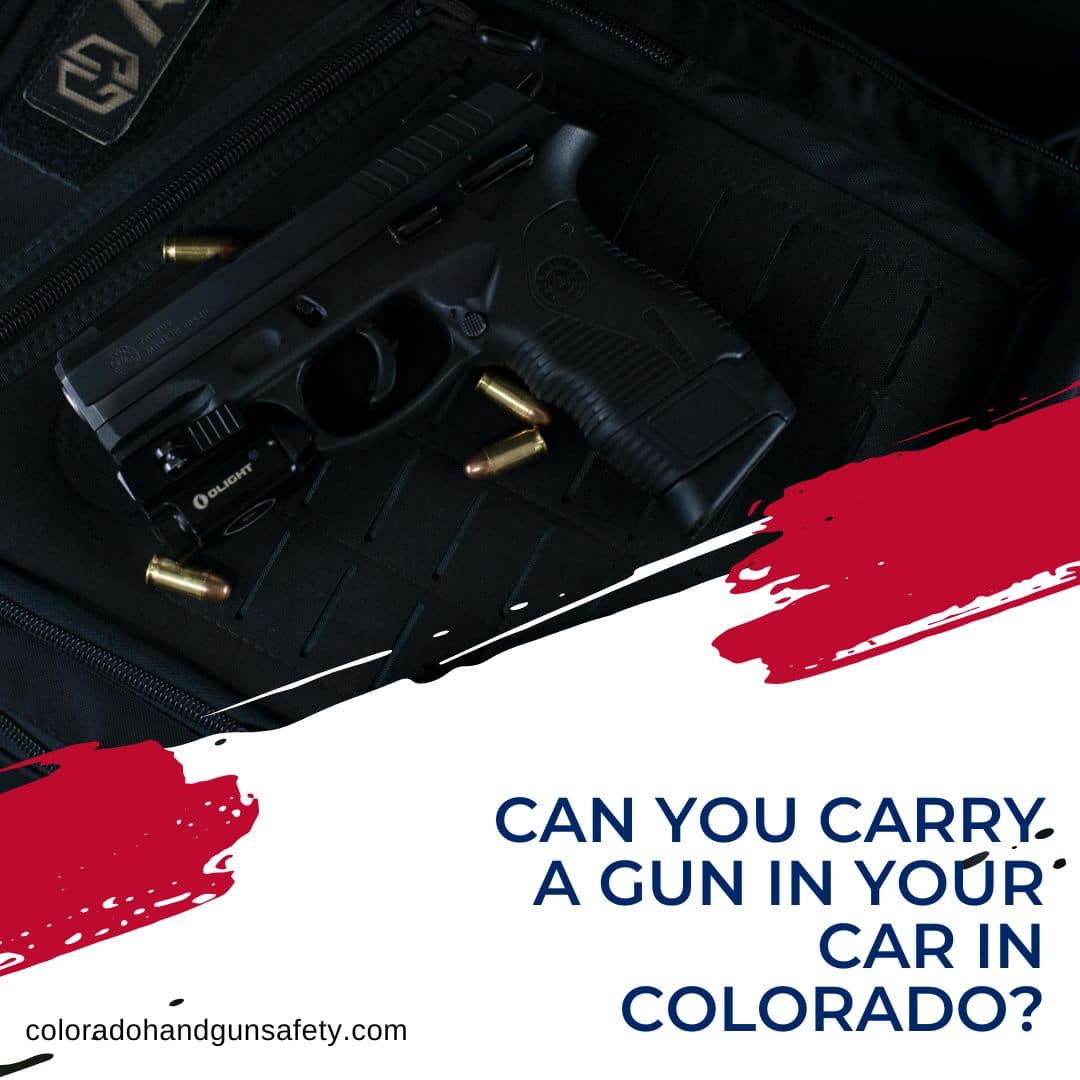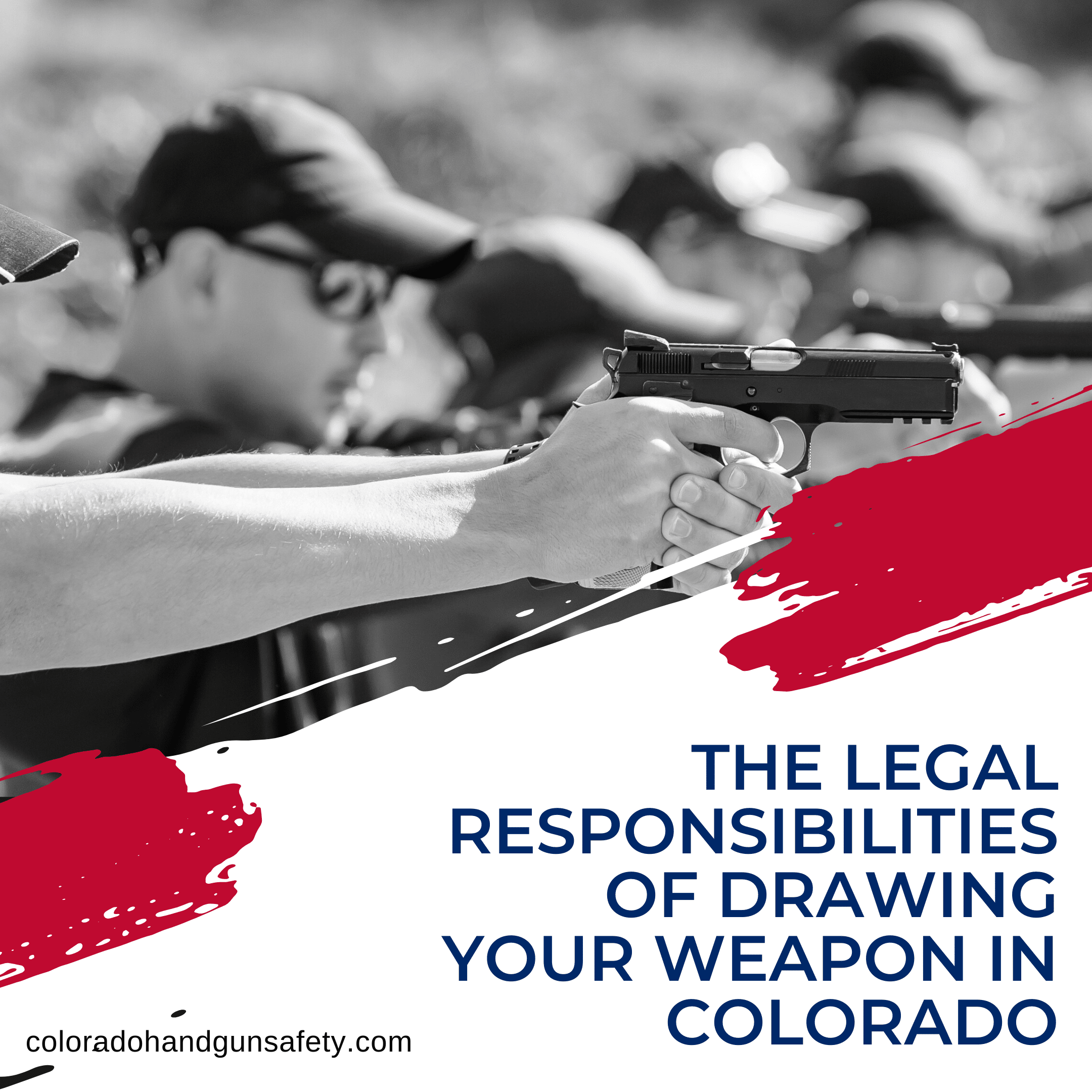Whether you’re an experienced or new handgun owner, you know that concealed carrying is not a decision to be taken lightly. If you’re like most concealed carriers in Colorado, you’re looking for the best way to protect yourself and your family should the need arise.
With that responsibility comes the need to stay current on training, safety best practices, and new laws. That’s why we’ve gathered the following tips and tricks from the certified instructors at Colorado Handgun Safety. These updates reflect new Colorado concealed carry laws that took effect July 1, 2025, so you’ll be confident that you’re carrying legally and safely.
Here are our top 10 concealed carry tips and tricks to remember while carrying your handgun.
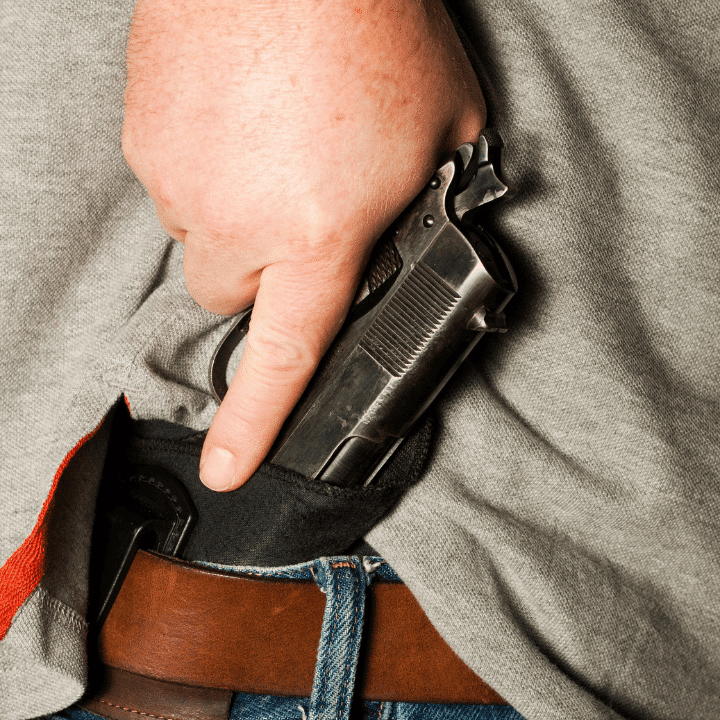
1. Pass Your Concealed Carry Class (Now With New Requirements)
Before you can legally carry a concealed handgun, you must complete a concealed carry class. As of July 2025, Colorado requires more extensive training:
- At least 8 hours of in-person instruction.
- A written exam (must score 80% or higher).
- A live-fire qualification of at least 50 rounds, with 70% accuracy required.
- Classes must be taught by a Verified Instructor approved by a county sheriff.
- Renewal applicants must complete a 2-hour live-fire refresher course.
Once you pass, you’ll receive a certificate valid for 1 year (new permits) or 6 months (renewals). Submit it to your county sheriff with fingerprints, photos, and your application. Permits are typically processed within 90 days.
2. Choose the Best Handgun for Your Needs
Once you’ve completed your concealed carry class and applied for your permit, the next step is choosing the right handgun. The best firearm for concealed carry is one that you feel comfortable, confident, and safe using.
When researching, compare several brands and models to find the one that best fits your lifestyle. Consider factors like size, weight, caliber, magazine capacity, and ease of operation. Here are a few key points to guide your decision:
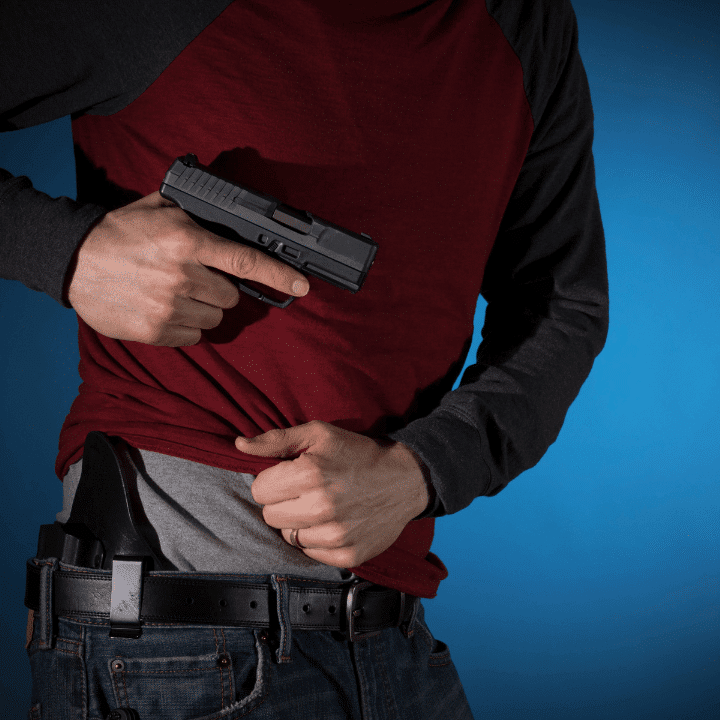
Handgun Reliability
Your handgun should function every time without hesitation. Reliability is non-negotiable when it comes to self-defense. Test different models at the range and make sure you trust the firearm to perform under pressure.
Some popular choices among new concealed carry holders include:
- Glock 19 Gen5
- Smith & Wesson M&P 9MM
- Kahr CW9
- Mossberg MC1sc
- Beretta PX4 Storm
Handgun Comfortability
Comfort goes beyond how a handgun feels in your hand. Pay attention to:
- Grip size – does it fit your hand naturally?
- Trigger pull – is it smooth and manageable?
- Recoil – can you stay in control after each shot?
You should also be able to operate the safety, magazine release, slide stop, and other controls without difficulty. A comfortable handgun allows you to carry with confidence.
Handgun Accuracy
Accuracy is critical in a defensive situation. Practice at different distances and note how consistently you can hit your target.
Most self-defense incidents occur at close range. In fact, FBI law enforcement data shows that many fatal encounters happen within 0–5 feet. For this reason, you want a firearm that helps you stay accurate at short distances while still performing well at 15–20 yards during training.
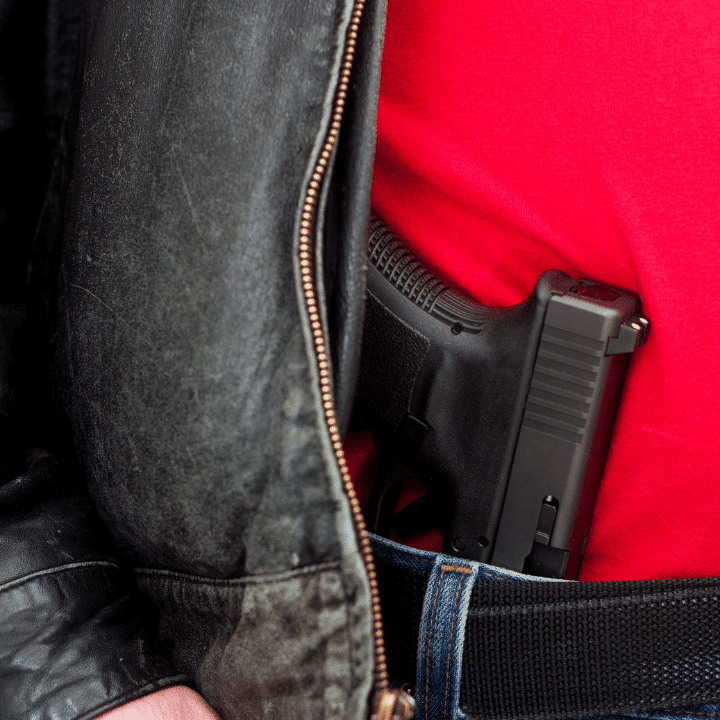
3. Select The Right Ammunition
While full metal jacket (FMJ) ammo is excellent for practice, most experts and trainers recommend hollow-point ammunition for self-defense.
- Hollow points expand on impact, improving stopping power and reducing the risk of over-penetration.
- FMJ rounds are more affordable and reliable for training, but they can pass through the target and pose risks in defensive situations.
A balanced approach: use FMJ at the range and carry hollow points for self-defense.
4. Get The Right Concealed Carry Holster
Choosing the right holster is one of the most important decisions you’ll make as a concealed carry holder. The right holster keeps your firearm secure, discreet, and accessible when you need it most.
When shopping for a holster, think about design, safety, durability, and comfort. Above all, choose one that prevents “printing” the outline of your firearm showing through clothing.

Holster Durability
Look for holsters made from strong, lasting materials like Kydex or reinforced nylon. These typically withstand more wear and tear than leather options. Also, ensure the fit is correct — a holster that’s too tight makes drawing difficult, while one that’s too loose risks the firearm slipping out.
Holster Safety
Many modern holsters include retention straps or locking mechanisms to prevent accidental drops or unauthorized access. Adjustable retention systems let you balance security with draw speed.
Holster Comfortability
Since you’ll likely wear your holster daily, comfort is key. It should fit snugly against your body without slipping or digging into your skin. If you carry inside the waistband, test different positions until you find the most natural draw angle.
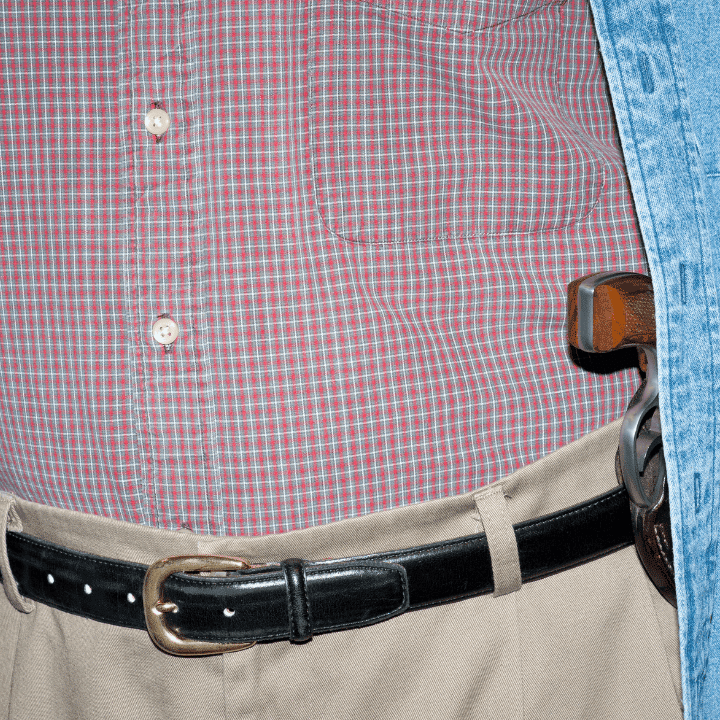
5. Figure Out How You Want to Conceal Carry
Once you’ve chosen a holster, it’s time to decide how you’ll carry. The two most common options are:
- Inside-the-waistband (IWB): Smaller, discreet, and easy to conceal. May require an undershirt or jacket for comfort.
- Outside-the-waistband (OWB): Larger and more visible. Common for open carry, though it can be concealed with the right clothing.
Whichever method you choose, practice drawing and reholstering regularly so your response becomes instinctive.
6. Understand The Gun Laws Near You
Concealed carry laws vary by state — and even by county or city. In Colorado, for example, permits are valid statewide, but places like schools, government buildings, and federal properties remain off-limits.
Local ordinances may add restrictions, too. Denver, for instance, limits open carry. Always research the laws where you live and any place you travel to avoid accidental violations.

7. Dress For Your Handgun
The right clothing makes a huge difference in effective concealment. Avoid tight-fitting clothes, which can make your firearm “print.” Instead, opt for looser styles like khakis, cargo pants, or jackets that naturally break up the outline of your weapon.
Garments with deeper pockets or layered designs also help maintain concealment in public. The goal is to carry confidently without drawing unnecessary attention.
8. Carry Your Handgun at All Times
Once permitted, make concealed carry part of your daily routine. Consistent carry helps you:
- Grow accustomed to the weight and feel of your firearm.
- Stay prepared for emergencies.
- Build confidence in your equipment and your ability to access it quickly.
Just remember: always carry with a valid concealed carry license and in accordance with state and local laws.

9. Remember Not to Touch Your Handgun in Public
Concealed carry means your handgun should remain out of sight and out of mind. Fidgeting with or adjusting your holster in public can draw unwanted attention.
If your holster is properly fitted, you shouldn’t need to touch your firearm until it’s absolutely necessary. Likewise, avoid showing off your gun or talking about it openly — even with friends — as it can be misinterpreted as a threat.
10. Continue to Practice Your Handgun Safety Skills
No matter how much experience you have with carrying a concealed handgun, you must keep practicing your safety skills. This means regularly seeking out additional firearm training and handgun classes for refreshers.
Additionally, take the time to research firearm laws, safety tips, and best practices for carrying a concealed handgun so that you can stay safe and knowledgeable about your rights as a gun owner.
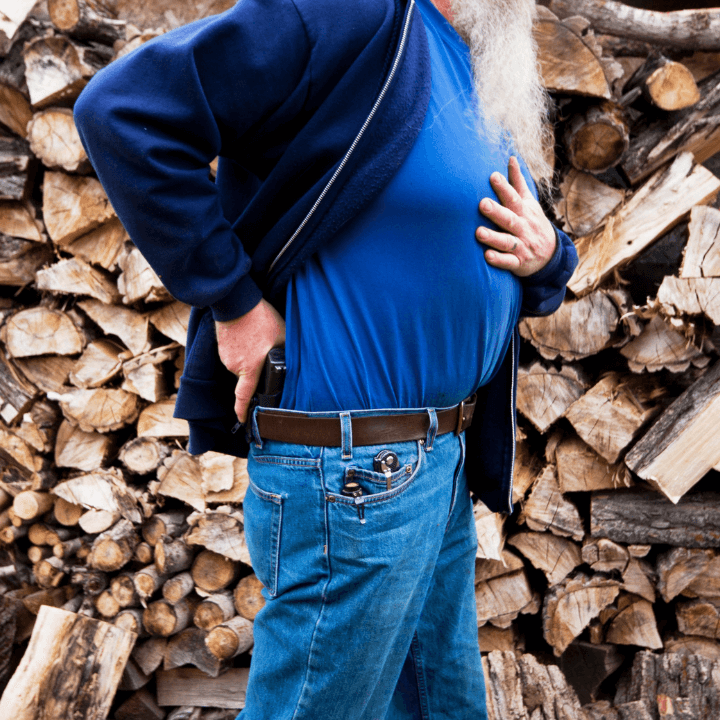
Take Your Concealed Carry Class With Colorado Handgun Safety
Following these tips and tricks, you can become a responsible concealed carry handgun owner in no time. Keep practicing your safety skills and stay informed about the laws in your area to be confident and prepared while carrying your firearm.
Colorado Handgun Safety offers concealed carry classes and other firearms training classes to help you understand the ins and outs of concealed carry. Our NRA-certified instructors are here to help you become a responsible and knowledgeable gun owner. So take a CCW class with us today to start your journey!
